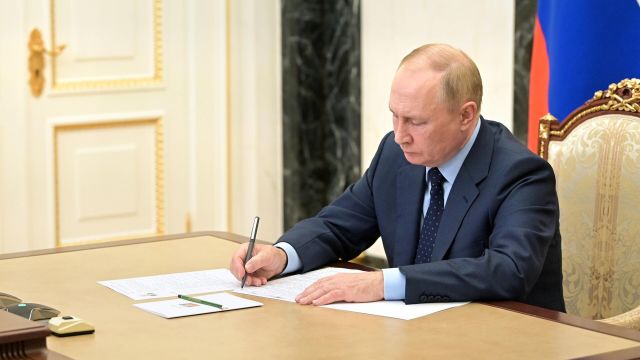Putin awarded more than 30 employees of the Mayak enterprise in Ozersk, Chelyabinsk region
MOSCOW, June 6 - RIA Novosti. By his decree, Russian President Vladimir Putin awarded more than 30 employees of the Mayak Production Association (BUT Ozersk, Chelyabinsk Region), Russia's leading industrial nuclear weapons enterprise.
According to the text of the decree published on Tuesday on the official portal of legal information, the employees of Mayak were awarded state awards for merits in the development of the nuclear industry and many years of conscientious work.
Mayak is part of the nuclear weapons complex of the Rosatom State Corporation. June 19 marks the 75th anniversary of the beginning of the work of the "Lighthouse", created as part of the Soviet atomic project to produce weapons-grade plutonium for nuclear charges, and then tritium for thermonuclear charges.
Alexey Konovalov, Director of the Mayaka plant, was awarded the Medal of the Order of Merit for the Fatherland of the first degree. A number of employees of Mayak were awarded medals of the Order of Merit for the Fatherland of the II degree and medals for Merits in the Development of Atomic Energy, other employees of the enterprise were awarded the honorary title of Honored Worker of the Nuclear Industry of the Russian Federation.
The foundation of the country's nuclear industry
"The Mayak Production Association, the first industrial facility of the domestic nuclear industry, ensures the security of Russia by fulfilling the state defense order for the production of nuclear weapons components. Other main areas of Mayak's current activities are transportation and reprocessing of spent nuclear fuel; production and sale of isotope products; mechanical engineering and instrumentation; research and production activities and solving problems of nuclear heritage. The technologies being mastered by Mayak are necessary for the development of nuclear energy in the future.
The decision to build a Soviet industrial complex for the production of weapons-grade plutonium was made in conditions when the domestic nuclear project entered its mobilization phase. This happened after the US tested its first atomic bomb in July 1945 and the subsequent atomic bombings by the Americans of the Japanese cities of Hiroshima and Nagasaki. Thus, the question of the speedy creation of its own nuclear weapons became for the Soviet Union a question of the possibility of its continued existence. And the future plutonium production, without exaggeration, became the main construction site of the country in those difficult post-war years.
A number of requirements were imposed on the place where this object was to be erected. In order to ensure secrecy, it had to be removed from large cities. At the same time, there should have been a developed industrial base, a railway, energy sources nearby, and, very importantly, large volumes of water should have been available in this area to cool the core of a nuclear reactor.
As a result, a site in the Southern Urals, between the cities of Kyshtym and Kasli on the shore of Lake Kyzyl-Tash, was chosen as the best place to place plutonium production. This place (in different years called Chelyabinsk-40, Chelyabinsk-65, now Ozersk) was approved by a decree of the Government of the USSR signed by Stalin on December 1, 1945.
The structure of the enterprise, which originally bore the conditional name "plant No. 817", included the first industrial uranium-graphite plutonium reactor (it received the index "A"), radiochemical plant "B" for the separation of plutonium from uranium irradiated in the reactor and metallurgical plant "B" for the production of products from metallic plutonium. On June 19, 1948, under the leadership of Igor Kurchatov, the scientific director of the Soviet atomic project, Reactor A was brought to its design capacity. This date is considered the day of the beginning of the work of the entire domestic nuclear industry.
Now "Mayak" is a complex of interconnected industries, structurally separated into factories and production units.

